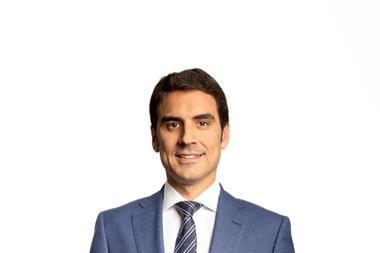Spanish institutional investors seeking to invest in real estate face huge obstacles, although the beginning of this year brought new hope, as Christine Senior reports
Institutional investors' allocations to real estate languish in the range of 1-3% of portfolios, minute by comparison with Spain's neighbour Portugal. Mercer in Spain estimates the allocation of pension funds to property has risen from 1% to 3% over the past 11 years, but the rise has been due more to an increase in the price of the assets than active increases in allocations. Mercer's service Pension Investment Performance Service (PIPS), which contains data on 73 pension funds or 54% of the occupational pension fund market in Spain, shows that other alternative assets on average amount to 3%, with 58% invested in fixed income and 36% in equities as at the end of last year.
Lack of investment has meant that pension funds have missed out on several years of good returns, even though the good times seem to be over for the time being.
"Even if the market goes down and it's gone down already depending on the sector, you would still have made a lot of money if you'd invested five years ago," says Javier Kindelan, institutional investment director at CB Richard Ellis Spain.
Spanish institutions have traditionally limited their investments to the more mainstream assets of bonds and equities. But it is hard to pinpoint exactly why their appetite for real estate is so weak. One reason could be that the commercial real estate sector lacks the size and therefore the opportunities offered by commercial property elsewhere. RREEF in Madrid estimates that the Madrid office market is about 11.5m m2 in size, significant but certainly smaller than in other European capitals such as the 36m m2 in Paris, or even the 17m m2 for Munich.
"The market has been relatively narrow and institutional investors have traditionally invested in what they thought were more liquid assets like government bonds, corporate bonds or public equities," says Ismael Clemente, head of RREEF in Spain and Portugal.
Another factor is that the Spanish real estate fund market has been hamstrung by rules introduced in the 1990s that limit their asset allocation. In a move to increase the supply of residential property for rent, the government fixed a 50% quota for this type of property to be included in such funds, which was later amended to allow investments in student accommodation and senior housing within the quota. This rule effectively means that Spanish real estate funds operate at a total disadvantage to their counterparts elsewhere. A pure Spanish office fund, or a pure logistics fund, for example, is impossible. Spanish investors prefer to invest in funds domiciled in Luxembourg that invest in Spanish property, because of their more liberal asset allocation rules.
"The rule has put the brakes on hopes of developing an indigenous real estate fund industry," says Clemente. "Residential rental property in Spain in the good years was yielding about 2-3% net cash on cash which is almost nothing. For this reason the fund industry has not developed much in Spain and so institutional investors have not had the incentive to invest in Spanish real estate funds. This is completely contrary to what happened in Portugal where the real estate fund industry has been traditionally very well developed, and Portuguese institutions and insurance companies have invested heavily in their own market through their real estate funds."
Clemente estimates the Spanish real estate fund market is worth around €10bn, much the same as the Portuguese market, but in an economy which is around seven times the size.
This situation looks set to persist, largely because the main Spanish real estate fund sponsors, BBVA and Banco Santander, who between them dominate the real estate funds market with a 60-70% market share, are unlikely to campaign for change because their priorities lie elsewhere, and there is a lack of independent real estate fund sponsors to take up their swords to lobby for reform.
But there have been some changes to the rules governing real estate investment by pension funds, which were effective from the beginning of the year. Previously, pension fund investments in real estate were only permitted through Spanish real estate funds. Now they can be via unlisted funds or directly up to a limit of 30% of portfolios.
Xavier Bellavista, a consultant at Mercer in Spain, welcomes the new rules: "The regulation changed in January this year and in general increased significantly the flexibility of the products that the pension funds can use. We do not expect a significant increase in the interest in real estate, but still positive. It is a good asset class to diversify, and so we could expect a moderate growth in this asset class."
Though diversification through real estate investments, and through other assets will no doubt come, no change is expected in the short term while the market is in the doldrums.
Andres Martin, investment consultant at Watson Wyatt in Madrid, comments: "Here in Spain we are suffering a downturn in real estate. People are scared of what is happening in real estate. Because of that I'm pretty sure we aren't going to see any further development in this kind of asset in the short term. In the long term we will probably see more and more people invest in this and also in private equity and other alternatives, but not right now."
Clemente also believes that would-be real estate investors are scared.
"If pension funds were thinking about diversifying and investing in real estate now they would be scared to death," he says. "This is a bad time to spur diversification into real estate, though it will happen, whether now or in three years' time, it will happen. It's true Spanish pension funds have a secular lag between their asset allocation and their peers in the EU, and particularly in the US."
Banco Santander has one fund for pension investments, the PPI Santander Inmobiliario, which has a global approach to investing in property. Its allocation to Spain is very low, but fund manager Cristina Rodriguez Iza, says, in spite of the fact that this is a global fund, she considers the fund's core market is Europe.
The fund invests though real estate funds. "Most of them are quite diversified among different property types," says Rodriguez Iza. "We used to favour regional funds over country funds. We also try to find a balance between open funds with all sorts of terms of liquidity and closed end funds. Finally, we also consider other means of investment into real estate (such as REITs)."












